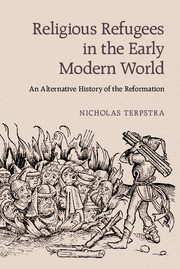1 - The Body of Christ: Defined and Threatened
Published online by Cambridge University Press: 05 August 2015
Summary
In order to understand how exile and expulsion could become mass phenomena from the late fifteenth century, we need to look at how European Christians of the centuries before this pictured their society and their relation to God. There was little unity and certainly no uniformity of views, and broad gaps between ideal and reality were the norm. When many Christians described community, they used the metaphor of a human body and in particular the Body of Christ. The metaphor of the Body had different linked dimensions: the social Body of Christians (Corpus Christianum) drew ultimately on the spiritual Body of Christ (Corpus Christi). This physical metaphor for the social community of believers distinguished Christianity from Judaism and Islam, and provided a very powerful imaginative framework for thinking about what characterized a pure social community and what threatened it.
Pictures and rituals put the idea of a Corpus Christianum at the centre of the Christian imaginary, and European Christians took responsibility for failing to reach the ideal community that it represented. But throughout the fourteenth century they became increasingly aware of other threats to that Body. There were threats from outside: the Ottoman Turks represented the biggest external threat, and the rising tide of Islam seemed repeatedly to be on the verge of drowning the Corpus Christianum entirely. And there were threats from within: heretics who rejected Catholic doctrines and structures, witches in league with the devil, and Jews who stubbornly refused to accept Christianity were all infections in one or another part of the body. Left unchecked, these infections would spread like a contagion across the whole Body of Christ. Religious leaders and institutions ought to be the spiritual doctors who could halt this contagion, but they often seemed too divided and preoccupied with their own interests to do much good. A Body thus weakened needed strong purgative medicines to restore it to health: doctors cut into the veins of sick patients to release bad and infected blood, gave emetics to trigger violent vomiting, enemas to empty the bowels, and diuretics to clear the bladder. The source of sickness had to be eliminated from the body before healing could begin.
- Type
- Chapter
- Information
- Religious Refugees in the Early Modern WorldAn Alternative History of the Reformation, pp. 21 - 73Publisher: Cambridge University PressPrint publication year: 2015



